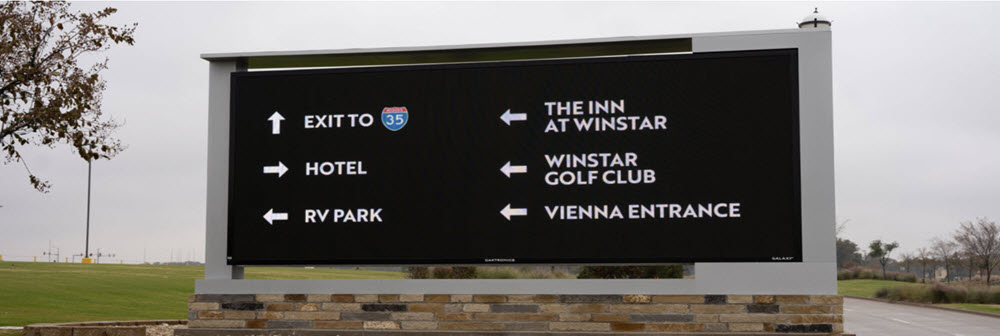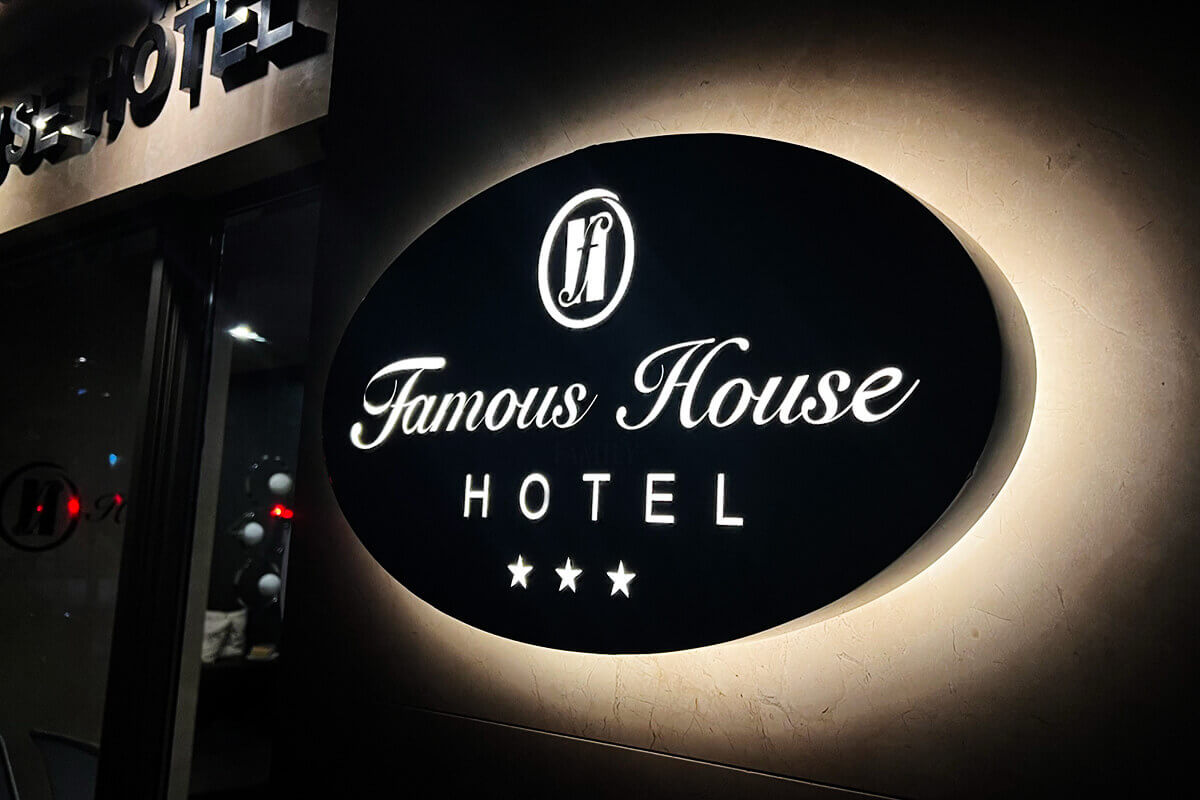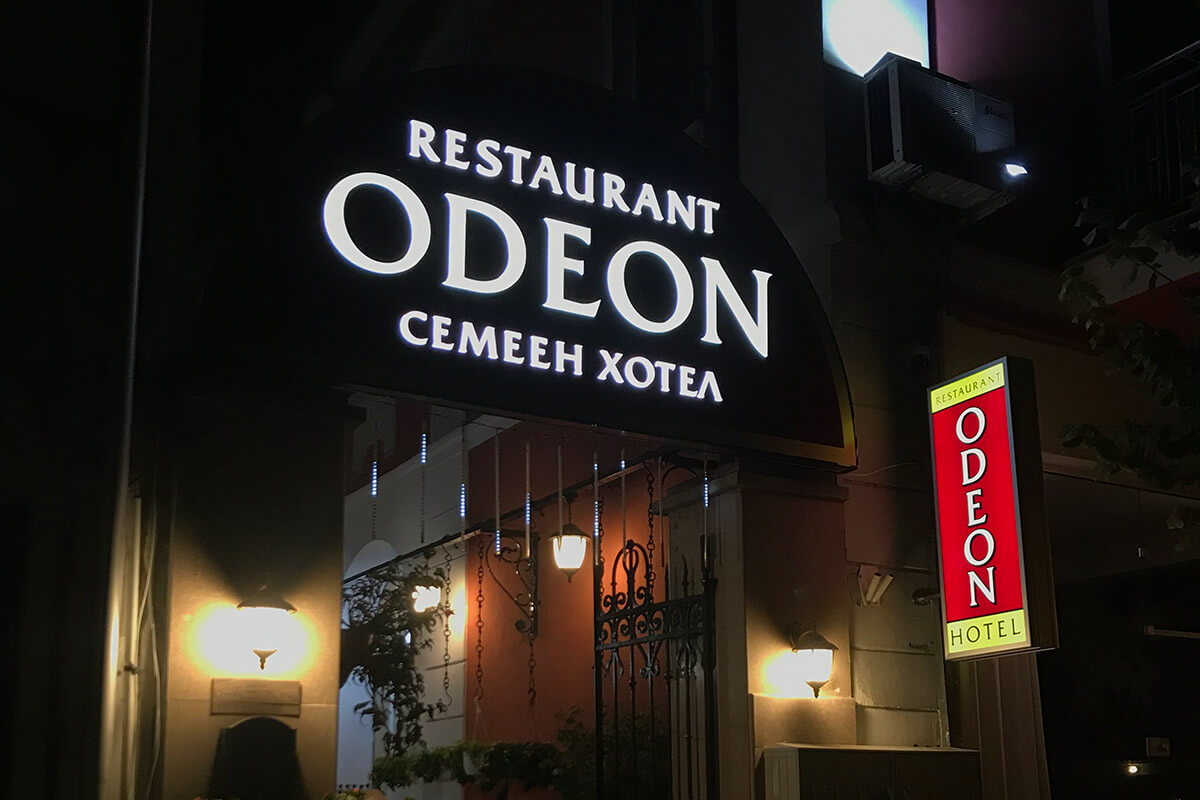In the hospitality industry, signage plays a critical role in shaping the guest experience. From the moment guests arrive until their departure, well-designed signage can make their stay easier, more enjoyable, and less stressful. Navigating a hotel without clear directions can be frustrating, leaving guests with a negative impression. Therefore, investing in high-quality hospitality signage is essential for ensuring that every aspect of a guest’s stay is as streamlined and pleasant as possible. This article will explore how different types of hospitality signage can enhance clarity, relaxation, safety, branding, and overall satisfaction.
Clarity and Simplification
Entrance and Exit Signs

Entrance and exit signs are the first points of contact for guests arriving at your hotel. These signs need to be strategically placed and highly visible to guide guests smoothly into and out of the premises. Colorful and well-designed monument signs can serve as welcoming beacons, directing guests to the appropriate entry and exit points. By clearly marking these critical areas, hotels can reduce confusion and set a positive tone for the guest’s entire stay.
Illuminated Signs

Illuminated signs are particularly effective for ensuring that guests can easily find their way, regardless of the time of day. Eye-catching and clear, these signs not only enhance the visual appeal of your hotel but also serve a practical purpose. For example, the illuminated blade sign created for Castillo Inn at the Beach instantly informs beachgoers of room availability, simplifying their decision-making process. By incorporating illuminated signage, hotels can significantly improve the overall guest experience, making it easier for them to navigate the property effortlessly.
Relaxation and Safety
Maps and Directional Signs
Guests expect a seamless and relaxing experience during their stay. Clear maps and directional signs placed at strategic locations, such as check-in counters, corridors, and near guest rooms, can greatly enhance this experience. These signs help guests quickly locate key areas within the hotel, such as restaurants, gyms, pools, and conference rooms, ensuring they can enjoy all the amenities without any hassle. By providing clear guidance, hotels can reduce the stress associated with finding one’s way, allowing guests to focus on relaxation and enjoyment.
Safety Signage
Safety signage is a critical component of hotel operations, particularly in ensuring compliance with the Americans with Disabilities Act (ADA). Safety signs guide all guests, including those with disabilities, to essential areas such as elevators, restrooms, and emergency exits. During an emergency, clear and compliant safety signage can be lifesaving, providing essential information on evacuation routes and safety procedures. Failure to adhere to ADA standards can result in significant fines and legal consequences. Companies like ACPSigns specialize in ADA-compliant signage, ensuring that all safety signs meet regulatory requirements and contribute to a safe environment for all guests.
Branding and Satisfaction
Hotel Wayfinding Signs
Wayfinding signs are instrumental in helping guests navigate the hotel property with ease. These signs contribute to a consistent and seamless experience by maintaining uniform branding throughout the hotel. Consistent branding not only enhances the aesthetic appeal of the property but also reinforces the hotel’s identity, making it more memorable for guests. High-quality wayfinding signs act like a virtual attendant, providing answers to common questions and guiding guests to their desired locations. This level of assistance ensures that guests are satisfied with their experience, as they can easily find what they need without having to seek help from staff constantly.
Integrating Technology with Traditional Signage
As technology continues to advance, integrating digital elements with traditional signage can offer additional benefits. Digital signs can provide real-time updates on events, room availability, dining options, and other hotel services. Interactive kiosks and digital maps can further enhance the guest experience by providing detailed information at the touch of a screen. By combining traditional and digital signage, hotels can offer a modern and efficient navigation system that caters to the needs of tech-savvy guests.
The Impact of Excellent Signage on Guest Experience
Investing in excellent hospitality signage goes beyond mere aesthetics; it directly impacts the guest experience and operational efficiency. Well-designed signage reduces the need for guests to ask for directions, allowing staff to focus on more personalized and value-added services. Additionally, clear and informative signs can reduce the likelihood of guests getting lost or confused, leading to higher satisfaction rates and better reviews.

Conclusion
In conclusion, high-quality hospitality signage is a fundamental aspect of enhancing the guest experience. From the moment guests arrive, strategically placed and well-designed signs guide them smoothly through the property, ensuring they can easily find their way and enjoy their stay. Whether it’s entrance and exit signs, illuminated signs, maps, directional signs, or safety signage, each type plays a vital role in creating a seamless and stress-free environment. By investing in superior signage, hotels can significantly improve guest satisfaction, uphold their brand identity, and ensure a safe and welcoming atmosphere for all guests. In an industry where every detail counts, excellent signage is not just an addition but a necessity.




